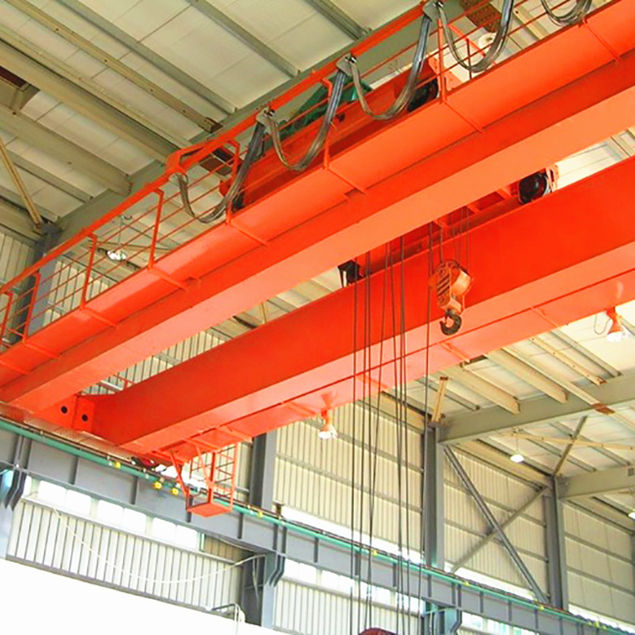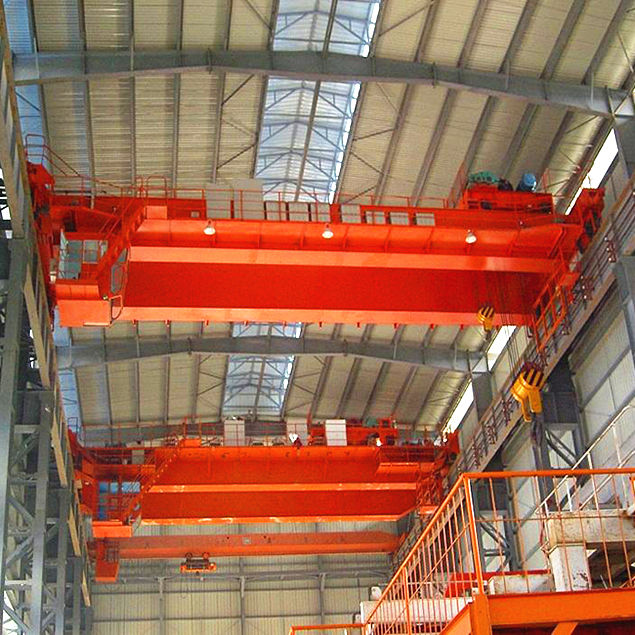Building a 40 ton bridge crane is a complex process that requires meticulous planning, skilled labor, and adherence to safety regulations to ensure the safe and efficient operation of the crane. Bridge cranes, also known as overhead cranes or gantry cranes, are essential equipment used in various industries for lifting and moving heavy loads with precision and reliability. A 40 ton bridge crane is capable of handling substantial loads and requires careful engineering and construction to meet performance and safety requirements. In this comprehensive guide, we will explore step-by-step instructions and best practices for building a 40 ton bridge crane, covering everything from structural design and component fabrication to installation and testing.

Structural Design and Engineering
The first step in building a 40 ton bridge crane is to develop a detailed structural design and engineering plan. Work with structural engineers and crane manufacturers to determine the required specifications, including load capacity, span length, lifting height, and operational requirements. Design the bridge crane structure, including the bridge girder, end trucks, hoist trolley, runway beams, and support columns, to meet industry standards and safety regulations.
Component Fabrication
Once the structural design is finalized, proceed with the fabrication of the crane components. Fabricate the bridge girder, end trucks, hoist trolley, and other structural components according to the engineering drawings and specifications. Use high-quality materials, such as structural steel beams, plates, and profiles, and employ skilled welders and fabricators to ensure the integrity and strength of the crane components.
Assembly and Welding
Assemble the crane components and weld them together to form the bridge crane structure. Use welding techniques such as arc welding, MIG welding, or TIG welding to create strong and durable welds that withstand the loads and stresses imposed by the crane operation. Ensure that all welds are performed by qualified welders and inspected for quality and compliance with welding standards and codes.
Mechanical and Electrical Installation
Install the mechanical and electrical components of the bridge crane, including the hoist mechanism, motors, brakes, gears, and electrical control panels. Follow the manufacturer’s instructions and wiring diagrams to connect the electrical components safely and securely. Test the mechanical and electrical systems to ensure proper operation and functionality before proceeding with the installation.
Crane Rail Installation
Install the crane rails or tracks along the length of the building or structure to provide a stable and secure foundation for the bridge crane. Position the rails parallel to each other and level them to ensure smooth and consistent crane movement. Use appropriate fasteners and anchors to secure the rails to the floor or structural supports, ensuring they are properly aligned and anchored to withstand the loads imposed by the crane.

Bridge Crane Erection
Erect the bridge crane structure onto the crane rails or runway beams using cranes, hoists, and other lifting equipment. Position the bridge girder, end trucks, and hoist trolley onto the crane rails, ensuring proper alignment and clearance. Securely bolt or weld the bridge crane structure to the crane rails or runway beams, ensuring stability and alignment throughout the assembly process.
Load Testing and Commissioning
Once the bridge crane is fully assembled and installed, conduct load testing and commissioning to ensure its safe and reliable operation. Gradually apply loads to the crane and test its performance under various operating conditions, including lifting capacity, speed, and precision. Verify that all safety features, such as overload protection of the heavy duty overhead crane, emergency stop buttons, and limit switches, are functioning correctly. Make any necessary adjustments or fine-tuning to optimize the crane’s performance and safety.
Training and Operator Certification
Provide comprehensive training for crane operators and maintenance personnel to ensure they are familiar with the operation, maintenance, and safety procedures of the bridge crane. Emphasize proper lifting techniques, load handling procedures, and emergency protocols to minimize the risk of accidents and injuries. Certify operators who demonstrate proficiency in operating the crane safely and effectively, and provide ongoing training and refresher courses as needed.
Regular Maintenance and Inspection
Establish a regular maintenance and inspection schedule for the 40 ton bridge crane to ensure its continued safe and reliable operation. Conduct routine inspections of the crane components, including hoists, trolleys, brakes, and electrical systems, to identify any signs of wear, damage, or malfunction. Lubricate moving parts, replace worn or damaged components, and perform preventive maintenance tasks according to the manufacturer’s recommendations and industry best practices.
In conclusion, building a 40 ton bridge crane requires careful planning, precise engineering, skilled labor, and adherence to safety protocols to ensure its safe and efficient operation. By following these step-by-step instructions and best practices, you can successfully design, fabricate, assemble, install, and commission a 40 ton bridge crane that meets your specific needs and performance requirements. A well-built and properly maintained bridge crane provides reliable lifting and material handling capabilities, contributing to the productivity and success of your operations.